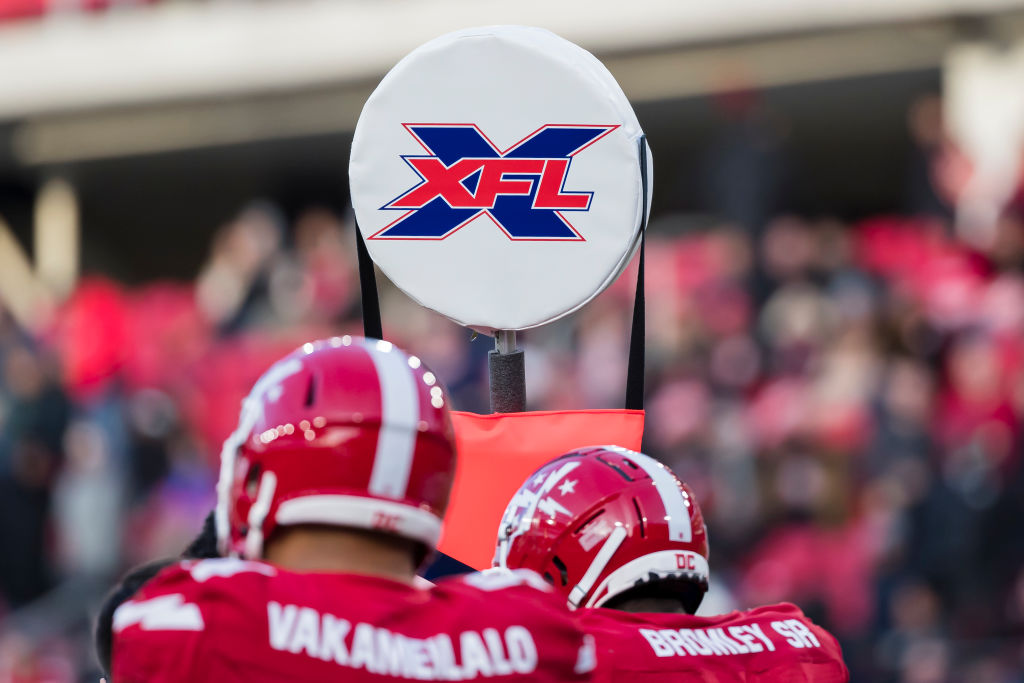NFL
The NFL Can Learn From Three Brilliant XFL Rules

The XFL season is just two games old and it’s already apparent that the fledgling pro football league has some innovative ideas that the National Football League should be thinking about in the future.
This version of Vince McMahon’s XFL is superior to what was rolled out in 2001 because it’s replaced gimmicks like the opening scramble to determine which offense got possession first with rules that fans should find intriguing.
Three rules in particular are worthy of consideration by the NFL in the not-too-distant future.
You’ll get a kick out of the XFL’s no-kick extra points
The NFL moved the line of scrimmage for extra-point kicks back to the 15 five seasons ago to add drama to the mundane. Kickers were so close to automatic before the change that there was no drama.
Moving the attempts back has resulted in more misses, but not enough to add meaningful drama in an era in which kickers are so reliable on field-goal tries from inside 50 yards. The XFL is taking kicking completely out of the equation.
After a touchdown, the offense can opt to run an extra-point attempt from the 2-, 5-, or 10-yard line. Successful attempts result in them being awarded between one and three points depending upon the distance selected. If the defense forces a fumble or interception, it can return the ball to the other end zone for the same number of points the offense was attempting to score.
That creates the potential for a touchdown to result in nine points, changing the definition of “a two-score game.” A 34-17 deficit with five minutes to play is suddenly a lot less hopeless and gives TV viewers a greater incentive to stick around.
The XFL is trying to keep the game moving along
Games that drag on too long are more of a college football problem than an issue for the pros, but the NFL does have challenges keeping its games contained in three-hour windows that are friendly for TV networks.
The XFL found easy places to cut by removing coaches’ replay challenges, shortening halftime by two minutes, and limiting the teams to two timeouts apiece in each half. The tradeoff with the latter is that a team getting the ball back at its own 20-yard line with a minute to go in the first half has more incentive to just pack it in if the first-down play doesn’t go for a big gain.
But the XFL brain trust has a solution in the form of its “comeback period.” Beginning with the two-minute warning of each half, plays that do not go out of bounds don’t stop the clock but do pause it momentarily. The ball gets spotted and there is a five-second runoff, with the net effect being that quarterbacks can throw the ball into the middle of the field instead of having to work the sidelines down the field.
The speedier pace is also apparent in the contest’s other 56 minutes. One official is dedicated to spotting the ball following each play, after which the 25-second play clock kicks in. NFL teams have 40 seconds timed between the end of one play and the snap starting the next, while the XFL estimates a 32-second average between plays.
The XFL rule makes it more challenging for offenses and defenses to execute situational substitutions ahead of third-and-long plays. That won’t eliminate third-down specialists in the backfield or in the pass rush, but it will limit them.
XFL overtime’s put the teams on equal footing
Both opening-day games ended in regulation, so fans didn’t get to see the XFL overtime procedure that guarantees each team a shot at scoring multiple times. NFL fans whose teams surrender a touchdown on the first series of overtime and never get a chance to match it will appreciate what the XFL is doing.
XFL overtimes will consist of five rounds of the two teams getting one down apiece to score from the 5-yard line. The team scoring on the most two-point plays wins, and OT ends if someone takes an insurmountable lead.
The first defensive penalty in overtime moves the ball to the 1-yard line for the attempt. All subsequent penalties in overtime result in the offense being awarded the two points for the play.











